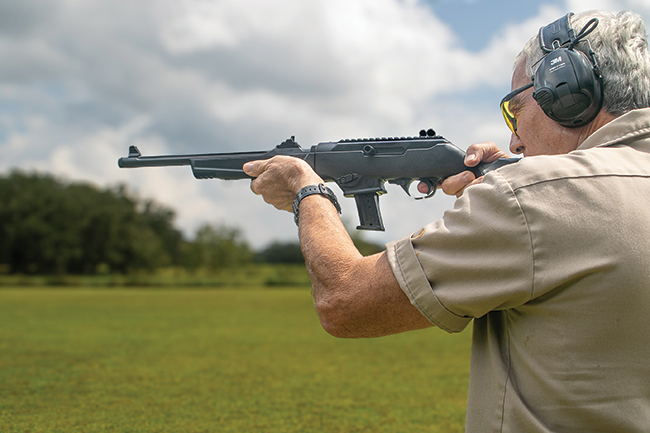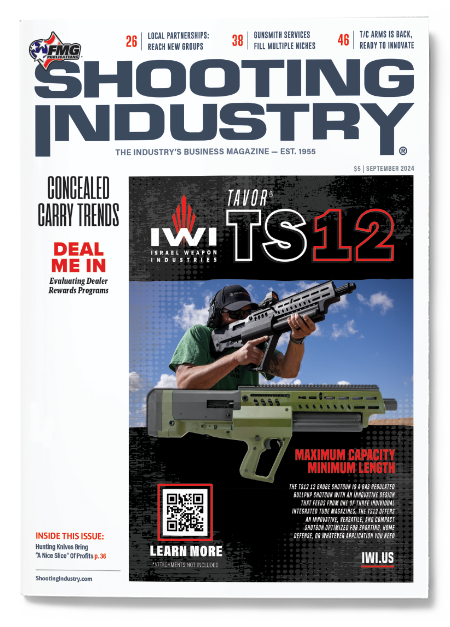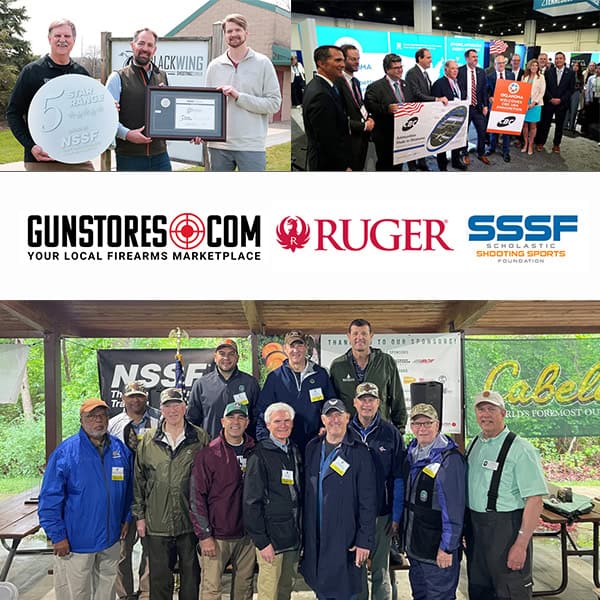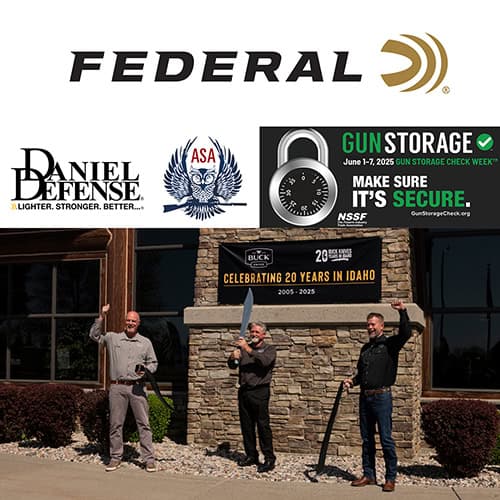Finding Out What Your Customers Want
You don’t need me or anyone else to tell you a key to successful sales is to offer something the customer wants. You’re holding one example of it in your hands. (Well, those of you reading the print version of this article.) Shooting Industry is a trade publication for those whose profession is retail sales of firearms and related products.
A while back in this column, we discussed how American gun owners have traditionally modeled their choice of defensive firearms, particularly handguns, on what the police used.
Kyle Barrett, owner of America Fidelis Guns & Ammo in Buckeye, Ariz., and Rim Country Guns in Payson, Ariz., wrote SI the following letter:
I know Mr. Ayoob’s article (“Selling The Defensive Battery,” Personal Defense Market, May 2024) focused on the parallels between police guns and home-defense guns, but there’s one tool he left out of the defensive battery: a pistol-caliber carbine (PCC).
At our shops, we often recommend PCCs like the KelTec SUB2000 or the Beretta CX4 Storm for home defense because they have a few advantages over rifles. They are shorter and lighter, they take the same magazines as your handgun, they shoot cheaper ammo — which makes practicing more accessible — and they are much quieter than rifles.
This last point is something a lot of people don’t think about in a defensive encounter: We’re careful to warn people a PCC will still ring their ears, but it will be much less disorienting to shoot indoors than an AR.
And, while we’re on the topic, we like to recommend a set of electronic muffs to keep near the home-defense carbine.
Ask, And You Shall Receive
Editor Jade Moldae and I greatly appreciate this sort of input. You are our customers, and we want your feedback as to what you want to see in these pages.
Mr. Barrett gave some great selling points on pistol-caliber carbines in his letter. As he notes: “They’re shorter and lighter, they take the same magazines as your handgun they shoot cheaper ammo which makes practicing more accessible, and they are much quieter than rifles.”
Additional selling points? How about mild recoil? The mildest, of course, is .22 LR. Now, most of us would be loath to recommend people use a cartridge as feeble as .22 LR to protect themselves and their loved ones, but we have to remember a lot of buyers have physical disabilities that make anything larger in caliber just too intimidating.
Something like a standard Ruger 10/22 looks like, well, a .22. But one in an AR-15 configuration looks like the dreaded misnamed “assault rifle” the media and certain politicians have told the public is an incredibly deadly “weapon of war” (even though no nation on earth issues semi-automatic AR-15s as a standard infantry weapon).
What’s the point of mentioning this to a customer? The point is a great sound bite we should use more than we do when defending the law-abiding public’s right to own AR-15s: If these things are so intimidating that two sitting presidents and an entire political party have called for them to be banned, shouldn’t they be intimidating enough that a violent home invader seeing one pointed at him would be more likely to run away so no one’s blood had to be spilled at all?
This intimidation value works for an AR-15 in .223/5.56 or any other caliber. It means it’s a good argument for an AR-15 in a pistol caliber, or even in .22 LR. (If I had to defend myself against deadly danger with one of my .22s, I would pick my Smith & Wesson M&P 15-22.)
Now Hear This
Mr. Barrett writes, “We like to recommend a set of electronic muffs to keep near the home defense carbine.” I could not agree more enthusiastically.
These have numerous advantages. On the range, of course, this sort of active hearing protection allows the shooter to hear range commands but still preserve their hearing. The best of these units will make small sounds louder and loud sounds quieter. This is obviously advantageous to the shooter.
Let’s not forget, though, many of your customers teach — tutoring their own friends and family members even if they don’t hang out a shingle as a professional firearms instructor. Active muffs can literally be lifesavers when worn by firearms instructors.
When the first of these active muffs came out in the early 1980s, I was a distributor for the Gentex line. I made sure to get them into the hands of men like Bill Jordan and John Farnam. The latter soon reported back on a “save.”
John had been contracted to teach on a range where the only backstop was some woods that the host assured him couldn’t be occupied. As a firing line prepared to shoot, John’s now-amplified hearing brought something to his attention. He froze the line and a few moments later, a mentally challenged young man emerged from the woods who would have been directly in the line of fire had John’s enhanced hearing not alerted him that the man was there.
A lot of firearms mishaps are preceded by the person messing with a stuck slide or muttering “damn gun” or words to that effect. If the instructor can hear it in time — even if the shooter’s body position blocks the range safety officer’s view of his hands — being able to pick up those small sounds can make for a warning heeded in time to prevent tragedy.
Many of your customers are woods-walkers — hunters and hikers. Remind them the best of the active muffs amplify sounds they might not have picked up with the naked ear, even if they have perfect hearing. As far back as the 1980s, I can recall hunting in Africa wearing the early Gentex Wolf Ears. And, despite impaired natural hearing, I was able to hear animals moving when even the bushmen — whose legendary senses make us pavement-walkers feel like Helen Keller — hadn’t heard them yet.
Tactical Applications
Let’s talk about tactical applications.
Remind your tactically oriented customers that gunfire reverberating indoors will temporarily reduce hearing at the moment when they need all their senses to be at their most sensitive and acute. Active muffs will also allow them to hear danger coming sooner than the naked ear might allow. Let them put on a pair, turn them on and turn their foot on the floor. They’ll be able to hear sole on floor or carpet.
Suppose the customer says, “My home-defense gun has a suppressor, so I don’t have to worry about that.” The suppressor solves only part of the problem. It doesn’t let them hear an intruder’s movements any better; good active muffs will. A suppressor doesn’t mute the alarming and potentially deafening gunfire of the opponent; active muffs do. And they don’t require a long wait and license fee paid to ATF.
And finally, remind the customer any intruder he takes at gunpoint will see he’s wearing muffs and realize, “This homeowner ain’t bluffing about being ready to shoot!”
Let me conclude by thanking Mr. Barrett one more time for his comments. Shooting Industry is for you, the dealer. Let the editor know what you want us to write about.






